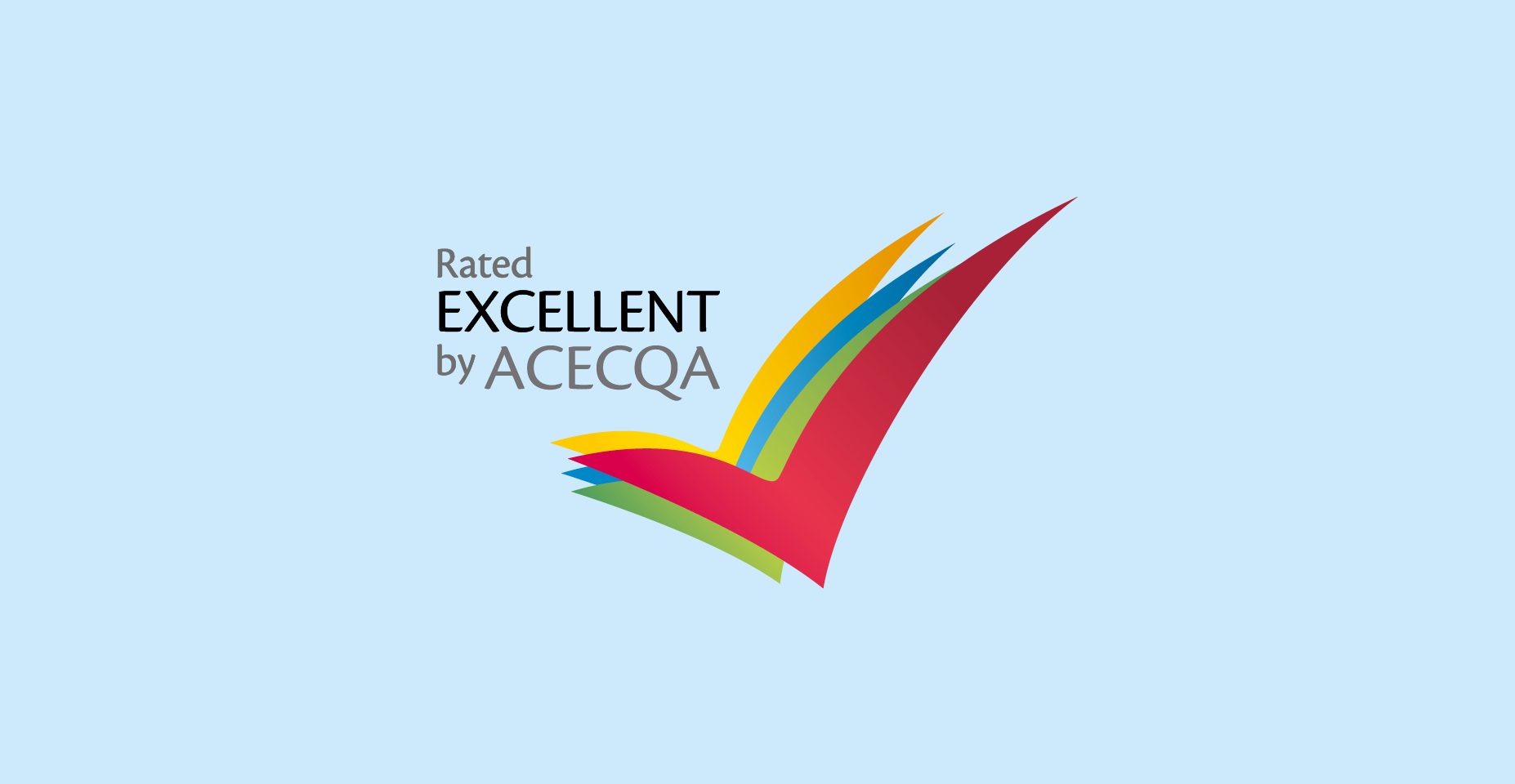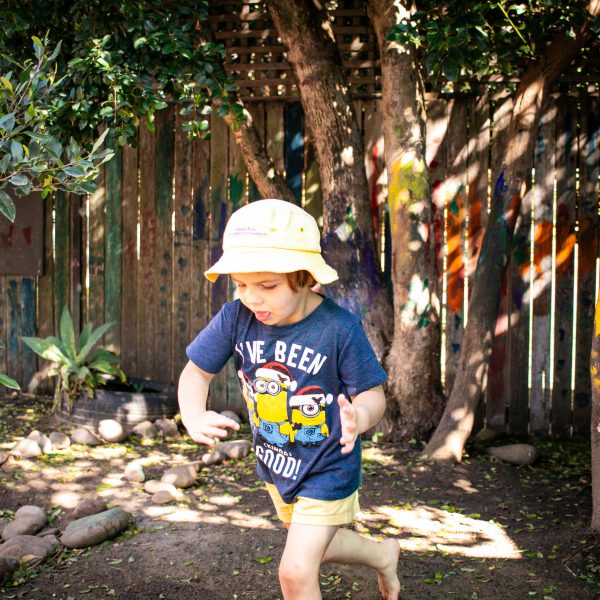Everton Park Child Care and Development Centre re-awarded Excellent rating

Everton Park Child Care and Development Centre (EPCCDC) has been re-awarded the Excellent rating for a third time.
On re-awarding the rating, the Australian Children’s Education and Care Quality Authority (ACECQA) particularly noted the centre’s:
- inclusive partnerships with children and families;
- positive workplace culture and organisational values, support of educators and sustained commitment to professional development; and,
- practice and environments that enhance children’s learning and growth.
The service was first awarded the Excellent rating in September 2016, a second Excellent rating in August 2019, and a third on 14 October 2022, which will remain in place until 13 October 2025.
The Brisbane-based service showed several examples of exceptional practice at the service including:
- In 2019, following visits to the annual agricultural show of Queensland, children shared seeing less farmers and animals than in previous years. A family member expressed a similar concern and asked the service to implement experiences focused on drought awareness.
This led to discussions over the coming months about changes children observed in their outdoor environment. Children identified that grass and some vegetables weren’t growing and asked when it had last rained. Children viewed the Queensland drought map, identifying that rural areas were mostly drought affected. Children questioned the unfairness of it and educators supported children to suggest how they could assist rural communities.
Suggestions included delivering seeds, donating a filled water tank and providing hay. Delivering hay was decided as most practical and in response, EPCCDC commenced in-service and across community fundraising. Close to $11,000 was raised and used to purchase 22 huge, 28 large rounds and 609 small bales of hay and cover fuel costs for trucking and trailer delivery.
A local contracting company provided a truck and driver at no cost. As children could not go on the hay run to Nindigully, they drew pictures and shared messages for the farmers.
In late 2019, the Outdoor Educational Leader accompanied the driver and documented the landscape on the journey and the delivery. The farmers hosted a social event, sharing the children’s letters and talking to their own children about where the hay delivery came from. The farmers also expressed gratitude to EPCCDC for teaching young children about the effects of drought on farming, the land and communities.
- Children are assisted to practice Dadirri, a traditional Aboriginal meditation which supports a sense of belonging to Country and holistic wellbeing. In late September 2022, the service held its annual art gallery event and drew on children’s responses following Dadirri sessions, in forming the foundation for its art exhibition pieces. This included:
-
-
Photographing the spaces that children had identified. Over numerous weeks, children collected a small sample of nature from each of those spaces. Using a food dehydrator, children dried the samples allowing them to be preserved.
-
Children arranged their preserved samples onto a round embroidery hoop, symbolic of the cyclical patterns in nature, to create their individual art pieces.
-
For its group piece, children worked alongside educators to place their individual samples within the river (middle) of a resin coffee table. EPCCDC stated that every child from the class and “their connection to community and place within this environment, is represented within this table”.
-
- In 2020, the approved provider changed furniture and resources within children’s play spaces. Some children expressed not liking the changes in their spaces. In response, educators commenced an indoor environment reflection with children and captured the following feedback:
-
-
“We don’t have a lot of plates. There’s no cups or much food or much baby equipment. It’s really hard when we want to be families because there’s only enough stuff for two people.”
-
“The stove needs to be bigger. You can’t really do anything with it right now.”
-
“I don’t like how the sink has no taps.”
-
Educators shared children’s feedback and their discussions with the approved provider, that:
- Children’s need for consistency should be respected and reflected in gradual changes to the environment and resources.
- Environmental modifications should be made based on children’s needs and wants and learning opportunities at that time.
- To facilitate children’s ability to plan for and drive key decision making over their learning environment and resources, consultations should be undertaken with children and educators prior to making environmental changes.
In response to children’s feedback, the provider:
- Organised for a local cabinet maker to install a real sink with a real tap (not connected) and to create a board that would fit over the sink, adapting it into a bench space.
- Added real hot plates with real elements and dials that can be connected (by staff only) for proper usage. EPCCDC acknowledged that the hot plates are regularly used for cooking experiences with the chef, room educators and family members.
Another example relates to the strategies to support a child to develop their leadership skills and sense of agency. Educators observed the child is reserved and prefers following their peers within the indoor environment. The child arrives early each day and educators have utilised that time to encourage the child to design physical play scenarios, such as obstacle courses, for the children.
This had led to the child waiting for and greeting peers on arrival, to enthusiastically share and demonstrate navigating the obstacle course they have designed. EPCCDC identified that the child continues to extend their own self-confidence and physical skills and those of peers through creating more advanced climbing challenges and in supporting and scaffolding peers in mastering their climbing skills.
- EPCCDC referenced that an enrolled family lives in one of the neighbouring properties, with which they share a common fence. The family was having trees removed by professional tree loppers. Children came outside to watch the tree cutting and suggested to educators that the removed tree trunks could be used within their outdoor play.
The director asked the neighbours if they could have the tree trunks and had them cut into smaller pieces for use as balance beams and stumps for children’s play. EPCCDC acknowledged they do not use plastic or traditional wooden balance beams, but repurposed tree trunks and thick branches, as part of their sustainable and loose parts practices and risky play focus.
- In early 2022, a local service director and educator contacted the service to organise a visit, which included:
-
- Reviewing documentation.
- Observing children in the outdoor environment, with a specific focus on risky play and facilitating a bush kinder program within service grounds.
- Speaking to educators regarding daily practices and risk assessments.
Upon their return to the service, the team engaged in reflection regarding their observations from EPCCDC and provisions for children within the environment. In response, they:
- Engaged children in various experiences of planting native plants to create natural borders and smaller areas within their larger playground, leading to increased levels of focus by children and more engaged play within those spaces, rather than the previous large, open space which encouraged children to run.
- Revisited their risk-benefit analysis and adjusted it to provide more flexibility and opportunity for children’s access and experience of risky play with climbing equipment.
The EPCCDC director later attended the service, to observe and discuss the practice changes that had been implemented following the visit. These included:
- Viewing the numerous new garden beds that had been created to section off separate areas of the outdoor environment, providing children with areas of calm, areas of action and areas of exploration, which they have been observed seeking out to self-regulate their behaviour.
- Observing additional natural loose parts which had been introduced to the environments for the children to explore while some of the more traditional toys had been removed from the outdoor environments.
- Children were observed showing increased perseverance and creativity with the addition of further loose parts resources.
- The director explained to the EPCCDC director that, after reading the risk benefit documents from EPCCDC, it had encouraged the team to reflect on their own risk-benefit documents. This then led to staff being more confident in supporting children’s engagement in risky play experiences.
As a leader in the sector, EPCCDC shares its practice and learnings through onsite professional conversations and mentoring, presentations, and resource sharing and development. This ensures their positive impact reaches far beyond the children and families who access their service.
Learn more about the Excellent rating here. For information about EPCCDC, please see here.
Popular

Policy
Practice
Quality
Provider
Research
Safety starts with supervision: responding to real risks in ECEC
2025-07-07 10:30:58
by Fiona Alston

Policy
Provider
Practice
Quality
Jay Weatherill appointed to co-lead urgent review into childcare safety in Victoria
2025-07-07 07:24:04
by Fiona Alston

Practice
Provider
Quality
Research
Workforce
New activity booklet supports everyday conversations to keep children safe
2025-07-10 09:00:16
by Fiona Alston












